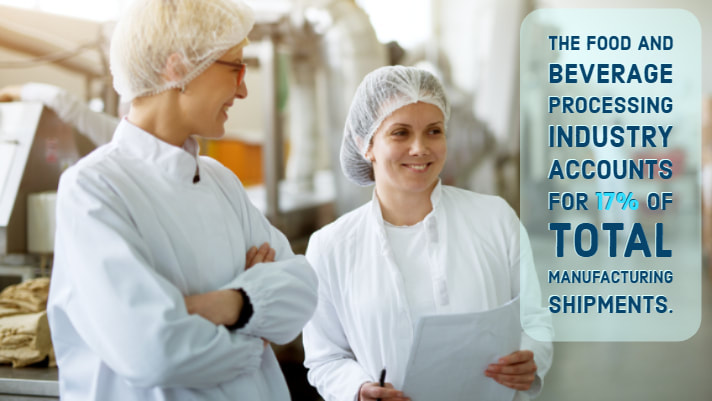2020
Properly Packaging and Transporting Produce

The Proper Packaging and Transportation Practices of Produce
It is estimated that food and beverage processing accounts for almost 20% of total manufacturing shipments. Food and beverage logistics is a huge deal for many companies. From warehousing and distribution services to wheels logistics tracking, there is a lot to decide. Ultimately, when it comes to food and beverage logistics though, safety and reliability are the end goals.
When coordinating food and beverage logistics, safety plays two parts. First, the safe transport of the food so that it arrives intact, and in a condition fit for sale. Second, safe food transportation methods must take place to ensure the food is safe to consume by customers after being purchased. As far as food and beverage logistics reliability is concerned, getting your shipments to the right place, on time, every time, is a vital part of running a clean business.
When it comes to shipping produce, there are some things you should know. The FDA has many articles and publications that establish rules and guidelines for the transportation of food and beverage logistics. Recently, the Guide to Minimize Microbial Food Safety Hazards for Fresh Fruits and Vegetables was published, and while the standards set forth are currently voluntary, they are strongly encouraged for consumer safety.
The guidelines set forth can be divided into three sections: Packing facility sanitation, packing facility pest control, and proper transportation. There are additional guidelines for growing and harvesting, however, those will not be focused on in this article.
Packing Facility Sanitation: The sanitation of the packing facility will directly impact the risk factor of contaminated produce being shipped and sold. There are numerous places throughout each packing facility that can contain pathogens. Floors, drains, equipment, food-contact surfaces, and other areas are all potential sources of microbial contamination. Here are some recommendations given by the FDA to reduce pathogen exposure in a packaging facility. As a top food and beverage logistics provider, we understand and follow all of the given recommendations to ensure safety to you and the consumer.
- Remove as much dirt and mud as possible while outside the packing facility.
- Frequently clean and sanitize pallets, containers, and bins before transporting fresh produce.
- Store cleaned and new packing materials and containers to protect them from pests, dirt, and condensation.
- Remove mud and debris from equipment daily.
- Ensure equipment lines can be broken down for thorough cleaning and sanitizing.
- Thoroughly clean and inspect knives, saws, blades, boots, gloves, and other items that come in contact with food or produce. Replace as needed.
- Clean the packing areas each day
- Maintain a clean storage area. This includes removing debris, soil, dirt, and other unnecessary items.
Pest Control: Pests can both spread disease and damage produce. Because of this, we have top line pest control in all of our facilities. Here are a few recommendations from the FDA
Remove waste, litter, and any other garbage from the premise that would attract pests.
- Clean the area daily to avoid attracting pests.
- Maintain surface drainage to reduce pest breeding sites.
- Inspect all facilities frequently for evidence of pests.
- Minimize food and water availability as both can attract pests.
- Eliminate pest nesting areas as much as possible.
- Maintain good seals on windows, doors, and other areas where pests may attempt to enter a facility. Use screens, wind curtains, and traps when necessary.
Proper Transportation: Once the produce has properly left the packaging facility, transportation becomes the number one area of safety. As produce is transferred, if it isn’t maintained properly, microbial contamination or spoiling can occur. Having proper loading, unloading, and transportation procedures is extremely important. Here are some of the most important aspects of transportation for produce:
- Keep all transportation vehicles cleaned and sanitized.
- Before loading produce, inspect trucks and cartons for cleanliness and odors.
- Be aware of contamination risk for vehicles that have recently transported goods. For example, do not transport produce on a truck that recently transported animal products without a thorough sanitation.
- Maintain proper temperatures.
- Avoid mixed loads with incompatible refrigeration requirements.
- Maintain proper refrigerated air circulation while loading a vehicle.
- Ensure workers who load and unload maintain good hygiene and sanitation practices.
- All product inspectors, buyers, or other visitors should comply with established hygiene practices, such as thoroughly washing hands before inspecting produce.
- As experts in the industry, we go above and beyond to ensure your food and beverage logistics are handled perfectly.
